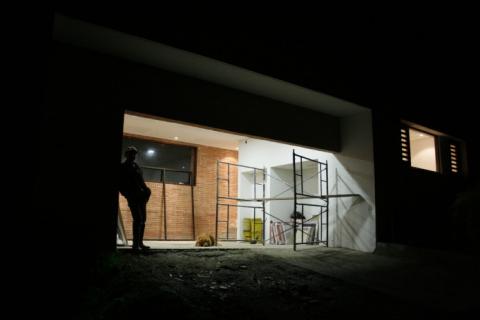Try this the next time you find yourself standing on a Wall Street corner. Ask the first power suit you see why Wall Street’s finest deserve to be making $25 billion in bonuses a year.
Wall Streeters actually have a ready response for impertinent questions like this: We deserve the big bucks, they’ll tell you, because we take risks.
Truth be told, risk-takers do abound in the canyons of Manhattan. But to see them, you have to lift your line of sight off street level — and beyond the corner offices of Wall Street’s high-finance movers and shakers.
You have to look skyward, up into the “high steel” world of construction workers continually adding new towers to the city’s skyline.
These workers risk life and limb every day — and don’t get anywhere near the reward that those “risk-taking” power suits are grabbing.
How risky has construction work in New York become? Over the past two years, 31 construction workers in the city have died. Between 2011 and 2015, the city’s Department of Buildings reports, instances of on-the-job construction injuries climbed 250 percent.
But New York hardly counts as an isolated example. In 2014, the latest year with full stats, 899 construction workers nationwide died from fatal work injuries, a 9 percent increase over the year before.
Why so much carnage in construction? Some of the same factors that make Wall Streeters fabulously rich are making construction work tragically unsafe.
Start with the steady erosion of America’s unions.
Fewer construction workers today carry union cards, and this declining union presence has severe consequences for safety. Construction unions have traditionally run well-regarded safety training programs, and they give individual workers the clout they need to challenge hazardous working conditions.
Without unions, workers in construction regularly find themselves both inadequately trained and forced to labor in situations that could — and do — kill them. Of the 31 New York construction workers who’ve perished on the job over the last two years, 29 have died working on nonunion job sites.
Unfortunately, even union sites have become more dangerous, as huge national construction companies have come to dominate what used to be a small-business sector.
In years past, local unions could bargain with modest-sized construction contractors and not feel overmatched. Not anymore. Unions know that if they challenge today’s construction giants too strenuously on safety, construction work will flow even faster to nonunion operations.
And what about OSHA, the federal agency that’s supposed to protect the job safety of America’s working people?
The anti-government and anti-regulation hysteria of recent decades has left OSHA woefully understaffed. Chronic budget squeezes have trimmed the ranks of OSHA job-site inspectors down to about 2,200 — or approximately one compliance officer for every 59,000 American workers.
What could turn this situation around? We need stronger safety regulations, for starters, and a stronger OSHA to enforce them. We need public policies that give all workers a shot at gaining effective union representation.
We need, in other words, everything that the new Trump administration isn’t planning to deliver. Trump has already put the kibosh on any new hires at OSHA and announced plansto cut existing federal regulations — on workplace safety and everything else — by 75 percent.
More carnage is coming — unless we start making attacks on job safety politically unsafe.
Sam Pizzigati, an Institute for Policy Studies associate fellow, co-edits Inequality.org. His latest book is The Rich Don’t Always Win. Distributed by OtherWords.org.


Spread the word